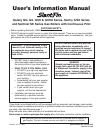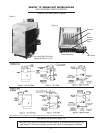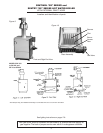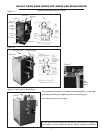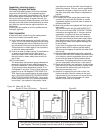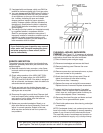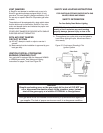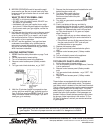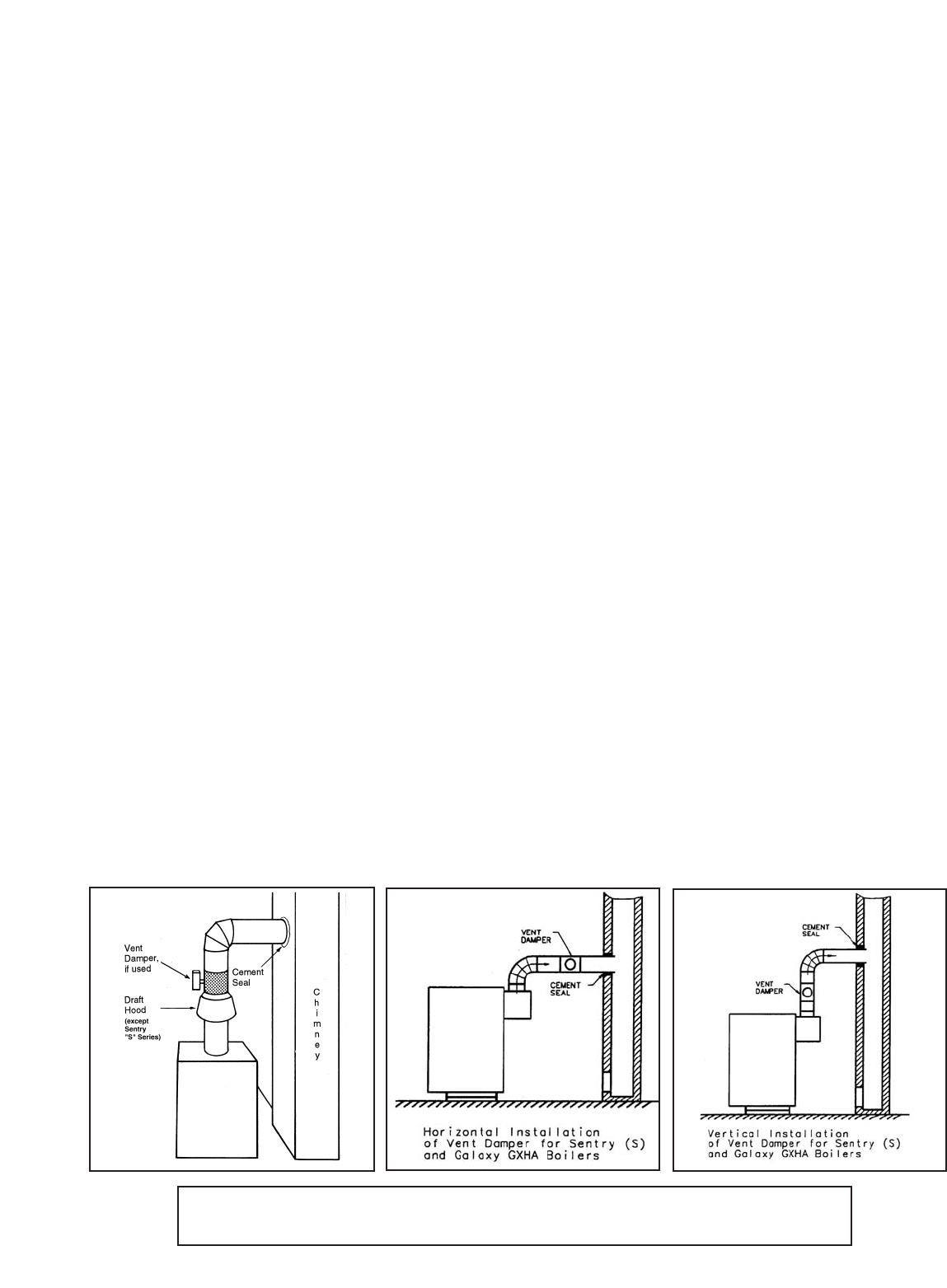
Inspection, cleaning, repair—
Chimney, flue pipe and boiler
Your boiler and heating system will last an indefinitely
long time at full efficiency, if it is inspected regularly
and is kept in good repair and adjustment.You, the user,
should make regular inspections, and report any prob-
lems to your service agency. At regular intervals, you
should have that agency inspect the system, and clean
t
he boiler and make repairs and adjustments as neces-
sary. What you and the service agency should do are
listed below.
Contact your gas supplier for a list of qualified service
and repair agencies.
User inspection
At least once each month during the heating season
and once just before cold weather starts:
(1) Look closely at the smokepipe and draft hood (see
Figure 18, 19 & 20). Make sure pipe joints are snug
and are fastened with screws. Cement at the chim-
ney joint should fill the joint and should not leak air.
There should be no visible signs of rust (corrosion)
or salts from water evaporation.
(2) Look at all water (or steam) piping. There should be
no leaks or signs of leaks at any pipe joints or
around the boiler. Drain valves, other valves, and
the relief valve (or steam safety valve) should not
drip or leak.
(3A) On water boilers:
The temperature and pressure gauge indicates the
pressure in the boiler at each water temperature.
For most installations, it should indicate about 12 to
15 psi pressure when temperature is about 70 to
100 degrees F, and from 15 psi to 25 psi when tem-
perature is up to 240 degrees F. FOR YOUR SYS-
TEM, there is one correct pressure for each temper-
ature
. ASK YOUR INSTALLER OR SERVICEPER-
SON TO EXPLAIN AND SHOW YOU. Learn what
normal pressures to look for. If pressure decreases
from nor
mal, your system is losing water
. If pres-
s
ure rises from normal, the relief valve will open to
relieve the pressure. Call your service organization
if pressures are higher or lower than normal, and if
t
he relief valve spills water. Repair or adjustment is
n
eeded.
(3B) On steam boilers:
(a) The water level in the gauge glass must be kept
constant.You must have your installer or service
organization explain to you how water is added to
maintain water level.
(b) Most boiler models are equipped with float type low
water cutoff.
You must be familiar with this LOW WATER CUT-
OFF, how it works and HOW TO BLOW IT DOWN.
Instructions are supplied with it. Ask your service
organization to e
xplain and show you blowdown.
The cutoff should be blown down three times the
first week and should be blown down weekly there-
after. Maintenance of the low water cutoff is vital in
protecting your steam boiler against breakage due
to loss of water.
If your boiler is equipped with an electronic probe
type low water cutoff, it requires periodic testing.
Ask your service agency to test this low water cutoff
twice a year.
(4) Study the labels attached to your boiler, especially
the LIGHTING AND SHUTDOWN instructions. Have
your installer or service organization show you how
to start and shut down the boiler following those
instructions. The lighting instructions on your boiler
are also reproduced, with pictures, in this manual.
(5) Stand near the boiler, look and listen. As the burners
start and shut off, there should be no unusual noise.
No fire should be visible coming out of the front
when the burners start or run.
(6) Ample air is required for your boiler to burn fuel
cleanly and safely. Check to make sure the open-
ings provided in your house are not closed and are
not obstructed. This is most important in colder
weather, when most air is needed.
5
Figure 18. (Galaxy GG, GX, GXH,
Sentinel SE, Sentry SX boilers)
Figure 19.
Figure 20.
Your gas boiler must be installed and serviced by a qualified service agency or
gas supplier. The lack of proper service can result in a dangerous condition.



